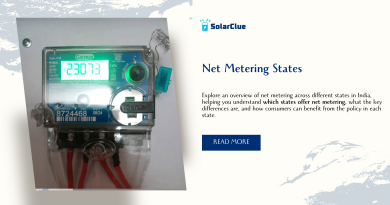How Much Are Solar Panels?
The adoption of solar energy in India has been on the rise, driven by decreasing solar panel costs, government incentives, and a growing awareness of renewable energy benefits. Understanding the cost structure of solar panels is crucial for making informed decisions. This guide will explore the various factors that influence solar panel prices in India, government subsidies and incentives available, financing options, and future cost trends.
Table of Contents
- 1 Factors Affecting Solar Panel Prices
- 2 Government Subsidies and Incentives
- 3 Financing Options
- 4 Cost Trends in the Indian Solar Market
- 5 Comparing Solar Energy Costs to Traditional Electricity
- 6 Tips for Getting the Best Price
- 7 The Impact of Panel Size and Wattage on Cost
- 8 Installation Costs and Regional Variations
- 9 Understanding Payback Periods and ROI
- 10 The Future of Solar Panel Costs in India
- 11 Table: Average Solar Panel Costs in India (2024)
- 12 FAQ Section
- 13 Conclusion
Factors Affecting Solar Panel Prices
Panel Type:
- Monocrystalline: These panels are more efficient and have a longer lifespan but come at a higher cost.
- Polycrystalline: Slightly less efficient than monocrystalline but more affordable, making them popular for residential use.
- Thin-Film: These are less efficient but are flexible and lightweight, generally cheaper but with a shorter lifespan.
Wattage:
- High-Wattage Panels: Panels with higher wattage (e.g., 400W and above) cost more upfront but may reduce the overall number of panels needed for your system.
- Low-Wattage Panels: These panels are less expensive but may require more space and more units to meet your energy needs.
Brand:
- Premium Brands: Offer higher efficiency, better warranties, and longer lifespans, but at a higher cost.
- Local/Generic Brands: More affordable but may come with lower efficiency and shorter warranties.
Installation Complexities:
- Roof Type: Flat roofs might be cheaper to install on than sloped roofs, which require more specialized mounting equipment.
- System Size: Larger systems might benefit from economies of scale, reducing the cost per watt.
Location:
- Urban vs. Rural: Installation costs might be higher in urban areas due to labor costs, but rural areas might incur additional transportation costs.
- Regional Variations: Different states have varying levels of demand, subsidies, and infrastructure, all of which impact prices.
Government Subsidies and Incentives
Central Government Subsidy:
- Residential Systems: The government provides up to a 40% subsidy for systems up to 3 kW and 20% for systems above 3 kW and up to 10 kW.
- Eligibility: Only systems installed by government-approved vendors are eligible for subsidies.
State-Level Incentives:
- Examples:
- Gujarat: Additional state subsidy for rooftop solar installations, simplifying the application process.
- Rajasthan: High solar potential and additional incentives for both grid-tied and off-grid installations.
- Variation: Subsidy amounts and eligibility criteria vary from state to state.
Net Metering and Feed-In Tariffs:
- Net Metering: Allows homeowners to sell excess electricity back to the grid, reducing electricity bills.
- Feed-In Tariffs (FiTs): Some states offer FiTs, where consumers are paid for the electricity they generate.
Financing Options
Solar Loans:
- Subsidized Loans: Some banks offer loans at reduced interest rates for solar installations.
- EMI Options: Many vendors provide EMI options, spreading the cost over several years.
Lease and PPA (Power Purchase Agreement):
- Solar Lease: You lease the solar system from a company and pay a fixed monthly amount.
- PPA: You agree to buy the electricity generated by the solar panels at a fixed rate, often lower than grid rates.
Crowdfunding and Peer-to-Peer Lending:
- Community Solar Projects: Some communities pool resources to fund solar projects, sharing the benefits.
- Peer-to-Peer Lending: Platforms that connect borrowers with lenders for solar financing.
Cost Trends in the Indian Solar Market
Declining Costs:
- Technological Advances: Improvements in manufacturing and efficiency have driven down costs.
- Increased Competition: More players in the market have led to competitive pricing.
Price Stabilization:
- Global Supply Chain Issues: Pandemic-related disruptions and geopolitical tensions may cause temporary price hikes or slowdowns in price reductions.
- Component Costs: Prices of key components like silicon and inverters fluctuate, affecting overall costs.
Comparing Solar Energy Costs to Traditional Electricity
Upfront Costs vs. Long-Term Savings:
- Solar: Higher upfront cost but significant savings over time, especially with government subsidies.
- Grid Electricity: Pay-as-you-go model, with rising electricity rates over time.
Levelized Cost of Energy (LCOE):
- Solar: LCOE for solar is decreasing, making it competitive with traditional power sources.
- Fossil Fuels: Fossil fuel prices are volatile, and their environmental costs are becoming a financial burden.
Tips for Getting the Best Price
Compare Quotes:
- Multiple Vendors: Get quotes from several vendors to compare prices and services.
- Check for Hidden Costs: Ensure the quote includes all components, installation, and post-installation services.
Optimize System Size:
- Right Sizing: Install a system that meets your needs without overpaying for extra capacity.
- Future Proofing: Consider potential future energy needs, such as adding an electric vehicle, to size your system appropriately.
Timing Your Purchase:
- Government Announcements: Keep an eye on subsidy announcements and deadlines.
- End of Financial Year: Some vendors offer discounts towards the end of the financial year.
The Impact of Panel Size and Wattage on Cost
High-Efficiency Panels:
- Cost-Effectiveness: While more expensive, high-efficiency panels can reduce the number of panels needed, saving on installation and space.
Low-Wattage Panels:
- Lower Initial Cost: Lower wattage panels are cheaper but may require more units, increasing installation costs and space requirements.
Installation Costs and Regional Variations
Urban Areas:
- Higher Labor Costs: Installation may be more expensive due to higher labor costs.
- Availability of Installers: More options in urban areas, potentially leading to competitive pricing.
Rural Areas:
- Transportation Costs: Higher due to the distance from suppliers.
- Installation Challenges: Rural installations may face challenges like difficult terrain or lack of infrastructure.
Understanding Payback Periods and ROI
Payback Period:
- Calculation: The payback period is the time it takes for the savings on electricity bills to cover the initial investment.
- Example: A 5 kW system costing INR 2,00,000 with annual savings of INR 30,000 would have a payback period of around 6-7 years.
Return on Investment (ROI):
- Long-Term Savings: After the payback period, all savings contribute to your ROI.
- System Lifespan: With solar panels typically lasting 25-30 years, ROI can be substantial.
The Future of Solar Panel Costs in India
Continued Decline in Costs:
- Economies of Scale: As more people adopt solar, production costs decrease, leading to lower prices.
- Technological Innovation: Advances in solar technology are expected to further reduce costs.
Government Support:
- Increased Subsidies: Government incentives are likely to continue, especially in the push towards achieving renewable energy targets.
- Policy Stability: Long-term policies supporting solar adoption will help stabilize and potentially reduce costs further.
Table: Average Solar Panel Costs in India (2024)
| Component | Cost Range (INR) |
|---|---|
| Monocrystalline Panels | 25,000 – 35,000 per kW |
| Polycrystalline Panels | 20,000 – 28,000 per kW |
| Thin-Film Panels | 18,000 – 25,000 per kW |
| Inverters | 15,000 – 30,000 per unit |
| Mounting Structure | 5,000 – 10,000 per kW |
| Battery Storage (optional) | 20,000 – 40,000 per kWh |
| Installation Costs | 7,000 – 15,000 per kW |
| Total Cost (without subsidy) | 1,00,000 – 1,50,000 per kW |
FAQ Section
- How much does a 1kW solar panel system cost in India in 2024?
- The cost ranges between INR 1,00,000 to 1,50,000 per kW, including installation but before subsidies.
- What government subsidies are available for solar panel installations in India?
- The central government provides up to a 40% subsidy for systems up to 3 kW and 20% for systems above 3 kW and up to 10 kW. Additional state-level incentives may also be available.
- How can I finance my solar panel installation?
- Financing options include solar loans, EMI plans, solar leases, and Power Purchase Agreements (PPAs).
- What factors affect the cost of solar panels?
- Factors include panel type, wattage, brand, installation complexities, and location.
- How long does it take to see a return on investment from solar panels?
- The payback period is typically 6-7 years, depending on system size, location, and electricity savings.
Conclusion
Investing in solar panels in India in 2024 is an economically viable and environmentally responsible choice. By understanding the factors that influence costs, available subsidies, and financing options, you can make an informed decision and maximize the benefits of your solar investment. As solar technology continues to evolve and government support remains strong, the future of solar energy in India looks promising, with further reductions in costs and increased accessibility for all.



